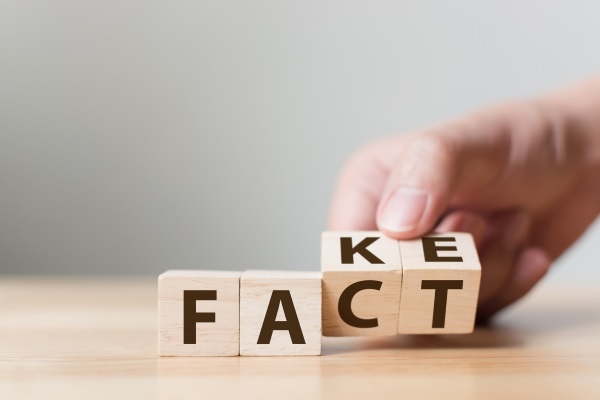Children and young people need to be equipped with the knowledge and skills to think critically about everything they read online. Charlie Roden looks at examples of fake news, and how we can teach pupils to make their own informed judgements.

The Collins Dictionary defines fake news as 'false, often sensational, information disseminated under the guise of news reporting.'
It includes stories or hoaxes that are produced to deliberately misinform readers. These stories are created to:
One of the most famous examples of fake news is the 'Pizzagate' scandal that went viral during the 2016 US presidential elections. However, the term fake news doesn't just apply to completely made up stories.
False headlines
False headlines, sometimes known as 'clickbait', are headlines that state something as fact, however the article itself is either inaccurate or grossly exaggerated. These headlines are used to grab readers attention and increase advertising revenue.
Badly reported or overly biased news
Instead of reporting news in an objective way, badly reported news occurs when an author has not necessarily made something up, but has only investigated what was needed to suit an agenda, excluding facts that oppose their own views.
A lot of badly reported news tend to mislead readers to promote a politicial cause.
Fake news is not a new phenomenon, however the rise of social media in recent years has enabled it to thrive and spread across the globe on an unprecedented scale – even more so than trustworthy news.
According to a 2018 Twitter investigation, false news spreads at a much faster rate.
Falsehood diffused significantly farther, faster, deeper, and more broadly than the truth in all categories of information, and the effects were more pronounced for false political news than for false news about terrorism, natural disasters, science, urban legends, or financial information. (American Association for the Advancement of Science)
Social media also discourages us from seeing news stories from a different perspective. Because of our personalised searches, seach engines and social media streams create an 'echo chamber', whereby readers are only shown content that reinforces their own views, preventing them from being challenged to think differently or critically.
Given that 66% of British adults access news through the internet, and nearly half get their news from social media, many of us are actually living in an online 'filter bubble'.
(Commission on Fake News and the Teaching of Critical Literacy in Schools, 2018)
Despite critical literacy being part of the curriculum, schools need to do more to ensure children and young people are equipped with the skills and knowledge needed to move beyond passively accepting something that they read, by questioning, examining and disputing it. These skills can be built into all lessons, from science to PSHE and history.
Provide pupils with a range of trustworthy and fake news stories. These can be from more reputable sources such as the BBC or Reuters, overly biased left-wing and right-wing newspapers and outright fake news.
Using these five strategies below, have pupils sort out these stories into three categories: trustworthy, too biased and fake.
1) Analyse the headline
2) Question the author's intention
3) Look at the viewpoints being represented
4) Challenge stereotypes
5) Check other sources
Download the thinking critically activity: questions to consider
There is no getting away from the fact that we are always going to be faced with some form of bias in the media.
What children and young people need is the skills and confidence to make their own informed judgements about what they see in the online world.
Excellence in Pupil Development Award (EPDA)
Want to put pupils' personal development at the heart of your school?
The EPDA offers a framework to evaluate and enrich your pastoral curriculum, giving your school the opportunity to set high expectations for pupil behaviour, promote positive attitudes towards learning and the wider community and engage with external organisations to help raise pupils' aspirations for their behaviour.
Find out more at oego.co/OE-EPDA